NASCAR 75 is a coffee table book that does exactly what well-crafted books in that category should do. Imagine a topic that you have no interest in, yet you pick up that thick, curiously oversized book when you’re at a friend’s house and become immersed in the topic that’s front and center. It’s a book that’s bathed in full-color photographs, hundreds of text blurbs explaining their relevance, and chapters that hold your hand as it explains why untold numbers of people find this topic fascinating. NASCAR 75 Years is the hardcover, coffee table book that does all of that.
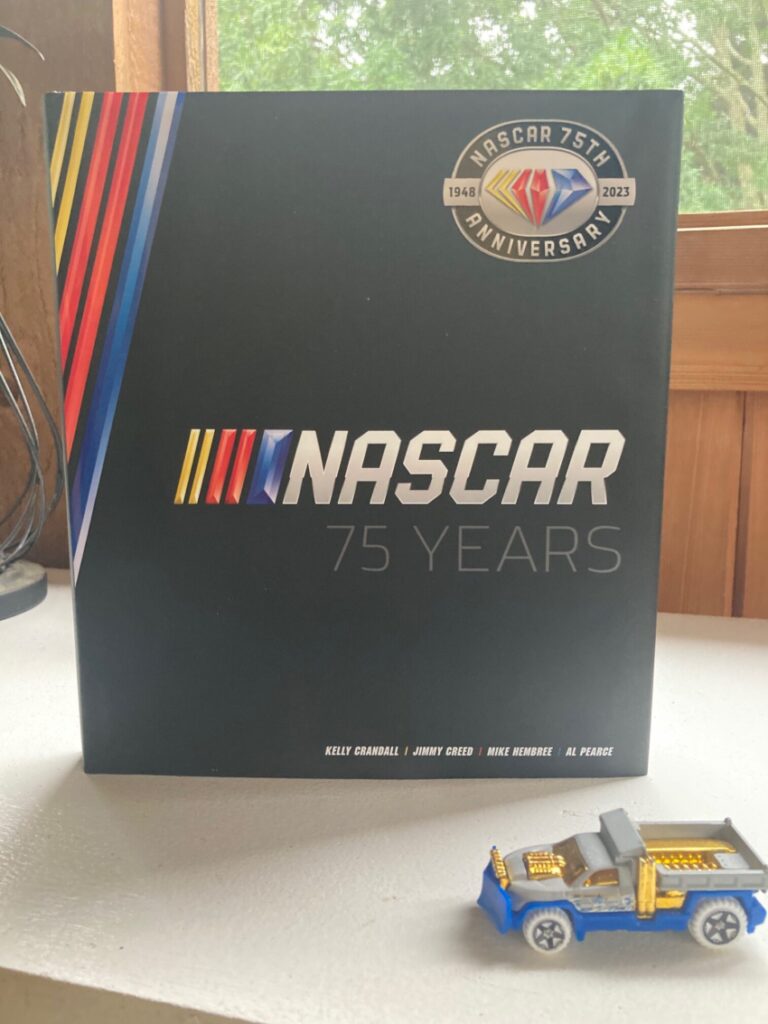
The immediate thing that everyone will notice about NASCAR 75 Years is the fact that it’s a heavy, comprehensive book that is very well-researched and has photographs that help guide readers through its journey. The book is broken up into decades and the way that the sport has changed and grown is impressive and challenging to comprehend.
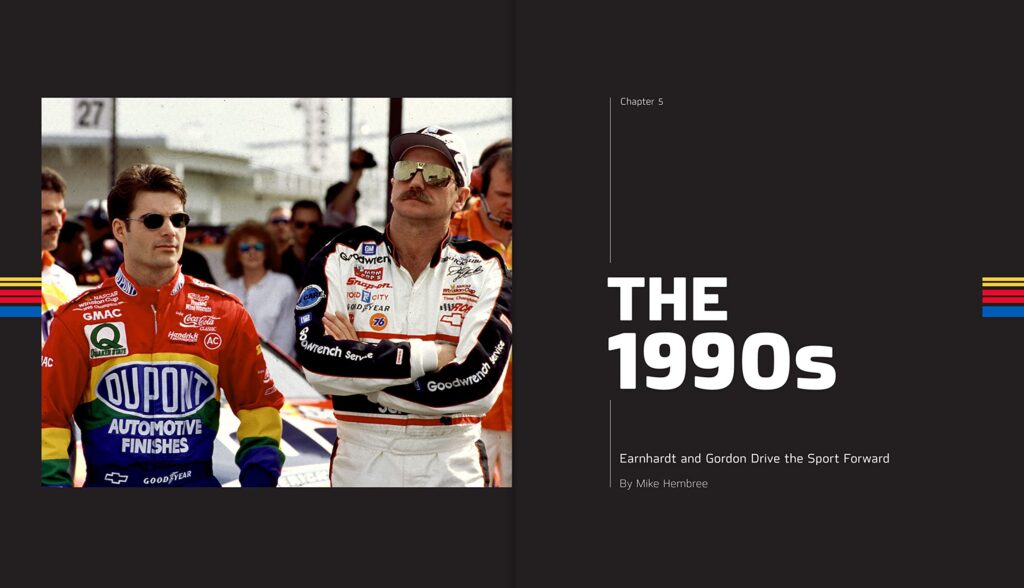
The book’s first chapter, The 1940s and 1950s is loaded to the brim with black & white photographs from the sports early races and their superstars. Lee Petty, who went on to become the patriarch of that famous family is featured prominently. Red Bryon was the first champion of the NASCAR Cup Series. He was also a flight engineer in WWII, wounded in service, and was able to drive after the war because his left leg was clamped to the clutch. NASCAR 75 is peppered with fascinating stories about drivers that you didn’t know or facts about those who you might’ve heard of.
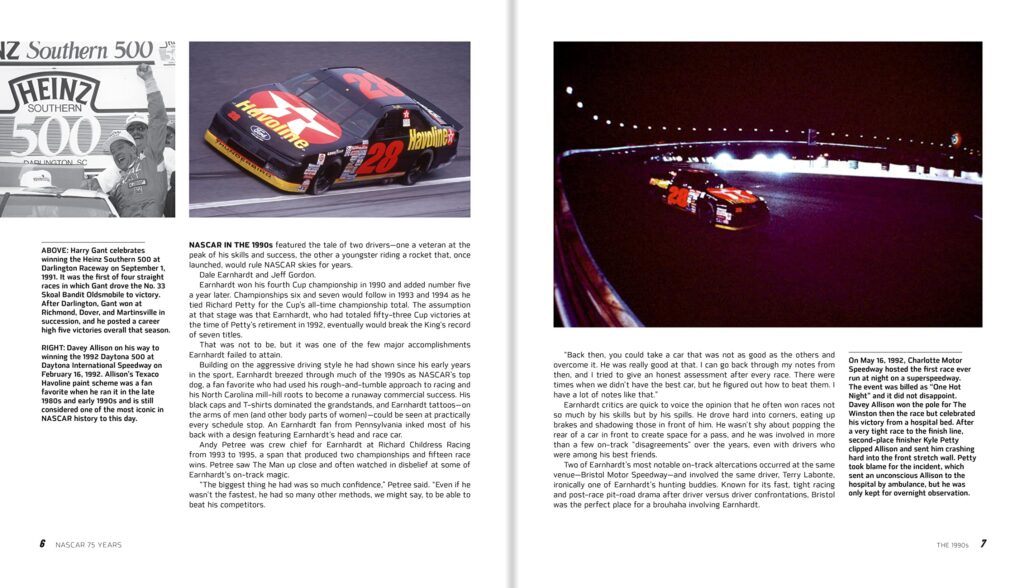
The racetracks started in the sand but the sport’s popularity quickly mandated bigger arenas for the fans to watch. The 33-degree banked turns on the racetracks were too steep for the asphalt to be placed without running down. To solve this problem a bulldozer was used at the top of the bank, with a metal cable securing the packing machine whose steamroller-like metal cylinder would compress the track. There are images of the early tracks being built and the angle of the packing machine helps put into perspective the height of the track and the danger that the NASCAR drivers faced. If you visit the NASCAR Hall of Fame in Charlotte, North Carolina, there’s an attraction called Glory Road that shows the 33-degree bank that was made famous at the Talladega Superspeedway.
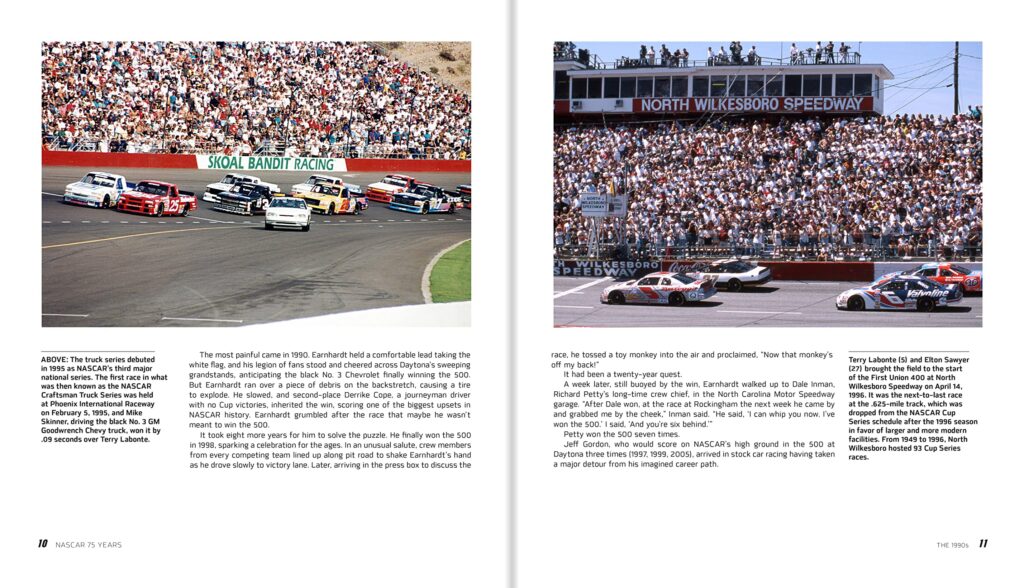
NASCAR fans will love the inside baseball stories that the book presents. How the fan’s feedback led to races starting at certain times, the seemingly minor car tweaks-like removing the wing for a spoiler and more will enthrall the fans. I enjoyed the technological elements of NASCAR 75 Years the most. I had no idea how the change from carburetion to electronic fuel injection changed almost nothing in the vehicles but was preceded by various teams fearing that it could lead to cheating or tampering.
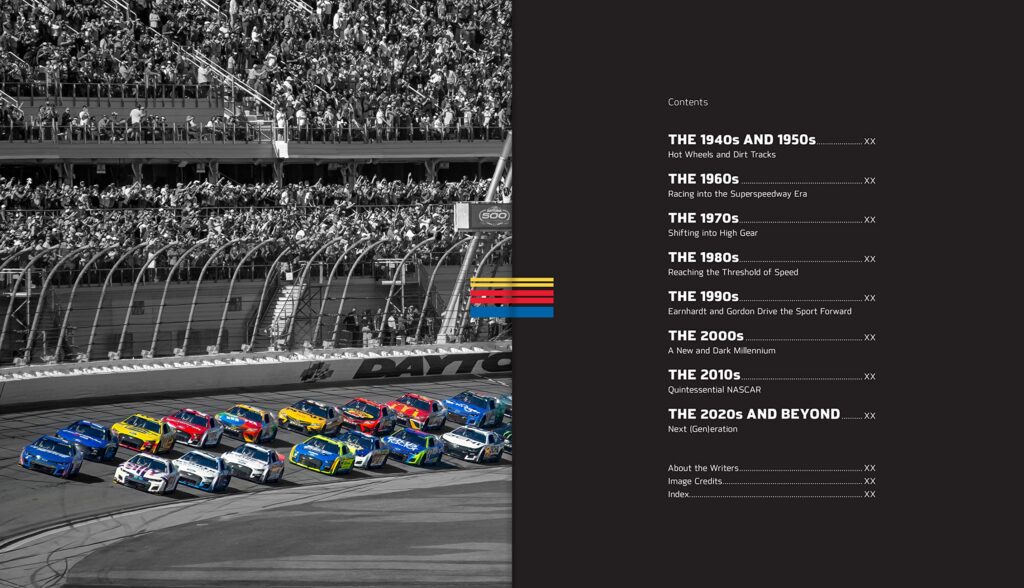
However, as much as I say that, it’s the human stories that I kept coming back to. There’s the team that disbanded in 2017 due to rising costs but dedicated their winning season to the team’s long-term girlfriend who had battled ovarian cancer. The behind-the-scenes support staff of various teams or drivers worked together like clockwork to achieve repeat success, year after year.
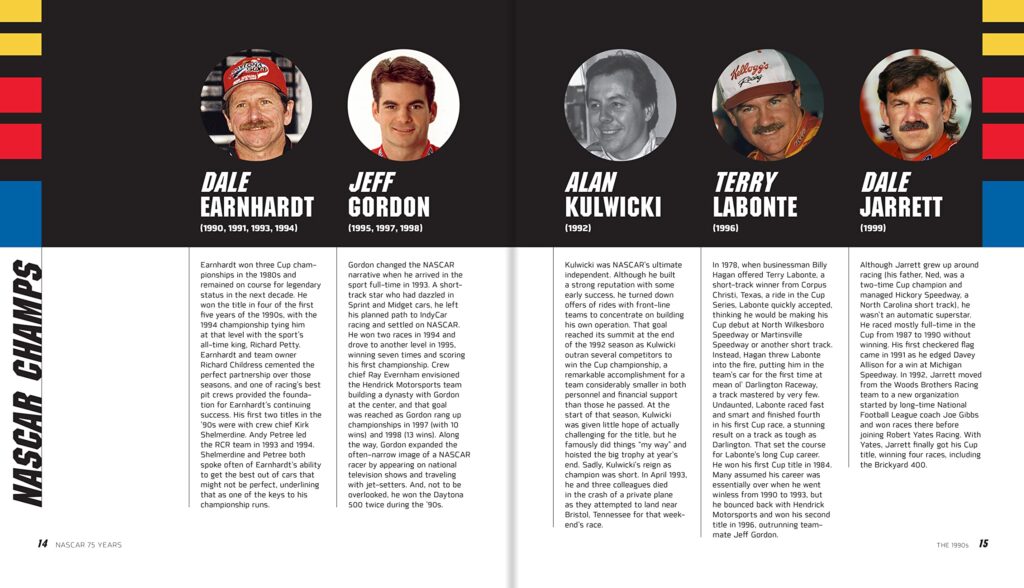
Those are the sorts of stories that turn a little-known activity into an instance that gives you passion. These are the stories summarized in an ESPN vignette that sends chills up your back about the inner workings of a sport you cared little about or knew nothing of before watching it. NASCAR 75 Years provides those thrills in spades for racing and sports fans but will do the same for those casual observers who might not like the topic but are willing to peek beneath the covers.
NACAR 75 Years is by Kelly Crandall, Jimmy Creed, Mike Hembree, and Al Pearce and is available on Motorbooks, an imprint of Quarto Knows.
There are affiliate links in this post.

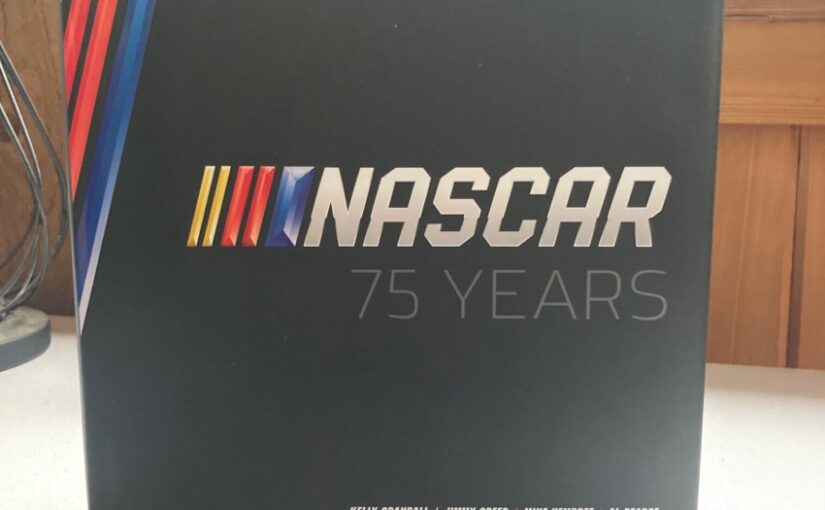



 Facebook
Facebook Twitter
Twitter Flickr
Flickr GooglePlus
GooglePlus Youtube
Youtube